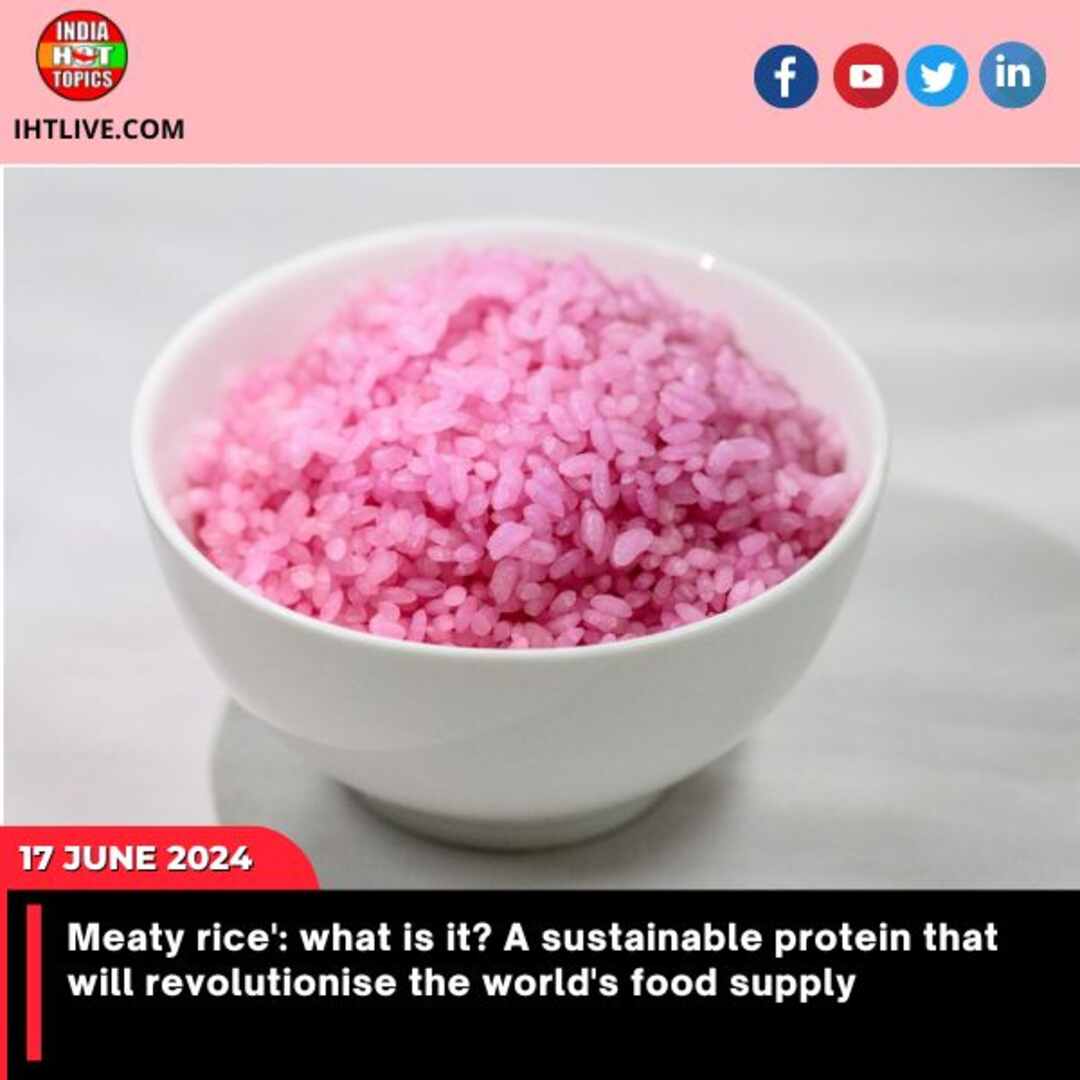Health
World Blood Donor Day 2024: 5 reasons to give blood and information about its health advantages

World Blood Donor Day 2024: Donating blood is a noble task, and it also comes with multiple health benefits. Blood transfusion is done to treat multiple health disorders such as anemia, cancer, etc. People are urged to donate healthy blood as it helps in a steady supply of blood for the healthcare industry. Every year, World Blood Donor Day is celebrated on June 14 to establish the importance of donating blood and how it helps in patient treatment. However, donating blood is a double bonanza–it helps the one donating blood, as well as the one receiving it. As we celebrate the important day today, here are a few things that we should know.
Unexpected health advantages of blood donation:
Promotes heart health:
The act of giving blood improves cardiovascular health. It also lessens blood viscosity, which helps to lower the risk of strokes and heart attacks. Donating blood contributes to maintaining a healthy blood supply, which lessens cardiac strain.
decreases iron stores:
Hemochromatosis, a disorder that can harm organs like the liver and heart, is brought on by an excessive amount of iron in the blood. Regular blood donation reduces extra iron, which is beneficial to general health.
Creation of new blood cells:
The body attempts to make up for blood lost after donating. This promotes the body’s ability to create new cells and carry out tasks efficiently in addition to aiding in the development of new blood cells.
Free health screening:
It is required to undergo a basic health examination, which includes measuring blood pressure, body temperature, pulse, and haemoglobin levels, prior to donating blood. This can assist us in better understanding our bodies and, if necessary, addressing any health issues that may arise.
enhances mental health
We get a psychological lift and feel better when we know that the blood we have donated may save a life or aid someone in need.
General News Platform – https://ihtlive.com/
Entertainment News Platforms – anyflix.in
Construction Infrastructure and Mining News Platform – https://cimreviews.com/
Podcast Platforms – https://anyfm.in/
Health
Meaty rice’: what is it? A sustainable protein that will revolutionise the world’s food supply

Scientists from South Korea are hoping to transform global eating habits by introducing individual rice grains with grown cow cells in a tiny lab in Seoul. Team leader and professor Hong Jin-kee thinks his new so-called “meaty rice” might become an ethical and environmentally sustainable way for people to receive protein, from preventing famines to feeding astronauts in space.
The meal, which is made without using any animals, has the appearance of a typical bowl of rice (although pink), but because it contains beef muscle and fat cell culture, it has a subtle buttery scent. Hong, of Yonsei University in Seoul, stated that “we can obtain animal protein without the slaughter of livestock” by using cultured meat.
Due to environmental worries about greenhouse gas emissions from animal husbandry and ethical qualms about industrial livestock rearing, businesses all over the world have been looking to commercialize meat substitutes like plant-based or cultured meat. With a background in organoids and biomedical sciences, Hong decided to focus his research on rice because it’s the most popular grain in Asia for protein.
Currently, this can be a laborious process: a typical rice grain is individually injected with beef cells, coated with fish gelatin to aid in adhesion, and then cultivated in a petri dish for up to 11 days. According to Hong, rice has a “slightly porous structure,” and after the beef cells are injected, the grain provides “an ideal structure for cells to grow uniformly from the inside out”.
carbon footprint
Compared to ordinary rice, Hong’s “meaty” rice has 7% more fat and 8% more protein. Although Hong and his colleagues are still figuring out how to scale the procedure, he intends to have their invention certified as emergency relief food for two African nations. “For those who are limited to… just one meal a day, a slight increase in (protein content), even by just a few percent, becomes incredibly important,” he stated.
Although it hasn’t authorised any meat that has been grown for human consumption, South Korea declared in 2022 that it would invest millions of dollars in a “foodtech” fund and designated cell-cultured meat as a top research priority. Singapore and the United States sell meat that has been raised. but Italy banned it last year citing a need to safeguard its livestock industry. Some scholars say potential ethical concerns with cultured meat include the sourcing of the initial animal cells.
It’s hard to be “certain about the safety of the serum used in culture media, and the antibiotics and hormones added during the culturing process” , Former Seoul National University emeritus professor Choi Yoon-jae,
By removing the need to produce and farm animals, Hong’s team’s hybrid rice approach greatly reduces the carbon footprint of protein. He calculates that it releases 6.27 kilogrammes (13.8 pounds) of carbon dioxide for every 100 grammes (3.5 ounces) of protein produced, which is eight times less than standard beef production.
Would you consume it?
According to Neil Stephens, a technology and society lecturer at the University of Birmingham, cultured meat has long been “presented as a climate solution compared to traditional livestock”. However, he pointed out that the industry faces difficulties, such as the requirement to be “produced at scale, and cheap, with low energy needs and environmentally friendly inputs,”
“The ‘meaty’ rice might have an advantage over some other cultured meat products” , because it’s a hybrid item that involves “mixing animal cells with plant material — the rice — making cheaper and less energy intensive,” he stated. Nevertheless, it would still need to persuade people to eat it and demonstrate its environmental merits on a large scale. Both could provide difficulties.”
By 2040, only 40% of the world’s meat consumption would come from conventional sources, according to global firm AT Kearney, upending the whole meat sector. According to a 2019 article, “Products such as milk, egg white, gelatin, and fish can be created with similar technology.” Hong is adamant that biotechnology has the power to improve human nutrition consumption.
For instance, he explained, eating lab-grown beef made exclusively of muscle cells rather than fat could help an elderly person suffering from sarcopenia, or muscle loss. He stated that “more biological information becomes available and we need to meticulously control our food” as a new era approaches.
He added that this might imply that a future AI-infused kitchen could assess a person’s health through a blood analysis, then instruct a robot to prepare the most suitable breakfast.
General News Platform – https://ihtlive.com/
Entertainment News Platforms – anyflix.in
Construction Infrastructure and Mining News Platform – https://cimreviews.com/
Podcast Platforms – https://anyfm.in/
Health
Women are more vulnerable than men to gonorrhea due to rising antibiotic resistance.

Don’t engage in sexual activity. It is “the only way to completely avoid STIs,” according to public health organizations. Avoid engaging in any oral, anal, or vaginal sex.
It is a sobering piece of wisdom. However, it also makes perfect sense when you look at the most recent data on the spread of antimicrobial resistance (AMR) and bacterial STIs, such as gonorrhea, from the European Centre for Disease Prevention and Control (ECDC).
Antibiotics including azithromycin, ceftriaxone, and cefixime are frequently used in medicine to treat gonorrhea, but their efficacy is declining. And that might be a factor in the rise in gonorrhea infections and STI cases in general throughout Europe, if not the world.
In a study released on June 10, 2024, the ECDC stated that there were 70,881 confirmed cases of gonorrhea in 28 EU/EEA (European Union/European Economic Area) nations in 2022, a 48% increase from the previous year.
AMR is one reason why antibiotics across the board — whether it’s for STIs or an earache — are failing public health efforts. Either we use them too much, or we don’t bother to take all the pills, with the result that bacteria are able to build up a resistance to many of our “go-to” drugs of the past 100 years.
Gonorrhea: What is it?
The Neisseria gonorrhoea bacteria is the cause of gonorrhea. It may impact the esophagus, rectum, or genitalia. Infections are common in young persons (ages 15 to 24).
Women are more likely than males to get an infection since diagnosis is more difficult for them. Women also frequently don’t have symptoms, and when they do, they are typically minor and can be confused for another vaginal or bladder infection. particularly expectant mothers, who may transmit STI infections to their fetus. Undiagnosed sexually transmitted infections can cause pregnancy problems in women or cause infertility.
However, men do experience symptoms, such as painful or enlarged testicles, a burning feeling when peeing, and a discharge that can be white, yellow, or green.
However, this is less common in women than it is in them. Teodora Elvira Wi, who oversees the global HIV, hepatitis, and STI programs at the World Health Organization in Geneva, stated that women must be given priority because they are asymptomatic.
“We need opportunities for women to be screened for STIs, and especially people at higher risk, people who have multiple partners and sexually active adolescents,” stated Wi.
‘Concerning’ antimicrobial resistance to popular medications for gonorrhea
In the ECDC paper, 4,396 gonorrhea samples (also known as “isolates”) from 23 different nations were analyzed. These samples were taken in 2022.
They discovered that “isolates resistant to azithromycin increased significantly to 25.6%, compared to 14.2% in 2021.”
Since azithromycin and ceftriaxone are frequently used together, the ECDC deemed this result to be “particularly concerning.”
Ciprofloxacin resistance rose as well, though not as dramatically: in 2022, 65.9% of isolates showed resistance, up from 62.8% in 2021.
Cefixime resistance remained “low at 0.3%.”
All things considered, the World Health Organization’s data from other regions—Africa and Asia, for example—reflects the ECDC figures.
According to Wi, 73 countries worldwide have reported antimicrobial resistance data in gonorrhea. “Antimicrobial resistance is not the only cause [there], but in countries where antimicrobial resistance is even higher than in Europe, it is contributing to the increase in bacterial STIs,” Wi added.
Pharyngeal (throat) gonorrhea was on the rise in 2022, according to ECDC data, although genital and anorectal gonorrhea cases stayed steady.
How to reduce STI transmission
According to WHO data from 2020, 374 million new cases of syphilis, gonorrhea, chlamydia, and trichomoniasis among individuals aged 15 to 49 occur worldwide each year. The increasing incidence of STI cases was attributed by the WHO to the following factors:
An increase in risky sexual conduct, such as the usage of fewer condoms and a rise in the number of casual and committed relationships
Socioeconomic factors and asymptomatic infections; biological considerations
Due to underfunding of services, there is a paucity of STI services, poor access to STI services, and a shortage of diagnostic test instruments.
Stigma: As a result of stigma, STI services and research are underfunded, and patients are less likely to seek treatment.
In public health initiatives to limit STIs, addressing and/or reversing these variables would be a smart place to start.
Wi advised against quitting entirely, saying that having sex should be accompanied by education. “Have sex, have pleasure in sex, make it a voluntary thing, do it for your sexual well-being and protect yourself the way you protect yourself from other infections,” she stated.
General News Platform – https://ihtlive.com/
Entertainment News Platforms – anyflix.in
Construction Infrastructure and Mining News Platform – https://cimreviews.com/
Podcast Platforms – https://anyfm.in/
Health
Kidney cancer: 7 lifestyle choices that harm your kidneys and increase your risk of developing the disease

Without any obvious symptoms, kidney cancer can begin to grow silently in the cells of your vital organ. Age is a risk factor for this malignancy, and lifestyle choices have a significant impact on its development. In 2023, there were about 4,600 new cases of kidney cancer, with an average age of 65 at diagnosis.
The risk of kidney cancer is twice as high for smokers as it is for non-smokers. As you age, you are heavily at risk for kidney cancer even if you do not smoke or drink and you do not lead an active lifestyle or eat poorly. Renal cell carcinoma (RCC) is the most prevalent kind of kidney cancer, making up roughly 90% of cases.
Without any obvious symptoms, kidney cancer can begin to grow silently in the cells of your vital organ. Age is a risk factor for this malignancy, and lifestyle choices have a significant impact on its development. In 2023, there were about 4,600 new cases of kidney cancer, with an average age of 65 at diagnosis.
The kidneys are organs that function to control blood pressure, preserve electrolyte balance, and filter waste and extra fluid from the blood. However, a number of factors, such as medical disorders and lifestyle decisions, might impair kidney health. Kidney cancer is one such issue, which is typified by the aberrant proliferation of kidney cells. Kidney cancer can progress quickly if treatment is not received, offering major health hazards, even though it may not necessarily show symptoms in its early stages. Dr. Raghunath S.K., Senior Consultant and Director of Uro-oncology and Robotic Surgery, HCG Cancer Centre, KR Road, Bangalore, adds that fortunately, there are actions you may do to enhance kidney health and lower the chance of kidney cancer and other related issues.
Without any obvious symptoms, kidney cancer can begin to grow silently in the cells of your vital organ. Age is a risk factor for this malignancy, and lifestyle choices have a significant impact on its development. In 2023, there were about 4,600 new cases of kidney cancer, with an average age of 65 at diagnosis.
“Smoking, obesity, and genetic predisposition are among the factors that are frequently associated with kidney cancer. Urine with blood in it, back discomfort, exhaustion, and weight loss are some of the symptoms. Imaging examinations are part of the diagnosis. According to the patient’s condition and the cancer’s stage, treatment options include immunotherapy, surgery, targeted therapy, and clinical trial participation, says Dr. Raghunath.
A better prognosis requires early detection. It is necessary to take some preventative steps in order to reduce the risk of kidney cancer.
Lifestyle errors to prevent kidney cancer
In order to protect your kidneys from cancer, you should avoid the following lifestyle faults, as advised by Dr. Raghunath SK:
1. Not eating a balanced diet: Make fruits, vegetables, and whole grains your top priorities and cut back on processed meats, sugar-filled drinks, and harmful fats. These foods are rich in nutrients and include vital vitamins, minerals, and antioxidants that promote healthy kidney function and lower the risk of kidney cancer.
2. Excess weight: Make conscious eating choices and frequent exercise your way to a healthy body weight. Being overweight raises the risk of cancer and renal disease as well as puts strain on the kidneys. To promote weight management and general health, concentrate on eating a range of nutrient-rich meals in sensible portions.
3. Not drinking enough water: Drinking enough water is crucial for healthy kidney function as well as the body’s removal of waste and pollutants. To maintain optimal kidney health, strive for at least 8 glasses (or 2 litres) of water throughout the day. Keep an eye on the colour of your urine; pale yellow pee denotes sufficient hydration.
4. Alcohol and smoking: Excessive alcohol intake and smoking are important risk factors for kidney cancer. You can lower your chance of developing cancer and preserve your kidneys by giving up smoking and drinking in moderation. If you need help reducing or quitting drinking or smoking, get in touch with support groups or medical specialists.
5. Not controlling blood pressure: High blood pressure raises the risk of renal disease and cancer by causing gradual damage to the kidneys. Regularly check your blood pressure and make lifestyle changes (balanced diet, regular exercise, stress reduction, medication if needed) to maintain it within a healthy range. Seek advice from your healthcare provider for specific recommendations.
6. Elevated blood sugar: Diabetics are more likely to develop renal problems and cancer. Keep your blood sugar under strict control with a healthy diet, regular exercise, medication, and monitoring. To reduce the risk of kidney issues, keep an eye on your carbohydrate intake, get regular exercise, and follow your diabetes treatment plan.
7. Abusing a lot of painkillers: Overuse of several over-the-counter painkillers can be harmful to the kidneys. Nonsteroidal anti-inflammatory medications (NSAIDs) have to be taken with caution and under a doctor’s supervision. Think about complementary and alternative methods of treating pain, like heat therapy, acupuncture, or physical therapy. Never exceed the stated dosage limits, and do not use NSAIDs for an extended period of time without a prescription.
By implementing easy-to-use yet powerful techniques into regular routines, individuals can take proactive steps towards protecting their kidneys and maintaining optimal health.
General News Platform – https://ihtlive.com/
Entertainment News Platforms – anyflix.in
Construction Infrastructure and Mining News Platform – https://cimreviews.com/
Podcast Platforms – https://anyfm.in/
-

 India11 months ago
India11 months agoThe afternoon briefing revealed that 97.26% of the ₹2000 notes were returned, and the Israeli Prime Minister committed to war goals.
-

 World4 months ago
World4 months agoMichigan splash pad attack: A couple was shot seven times in total while defending their two small daughters.
-

 Business2 years ago
Business2 years agoSrikanth Venkatachari is appointed as the new chief financial officer by Reliance Industries.
-

 Entertainment1 year ago
Entertainment1 year agoNew Season 8 The Walking Dead trailer flashes forward in time
-

 India1 year ago
India1 year agoPM Modi’s Three-Nation Tour Begins with a Traditional Welcome in Papua New Guinea
-

 India Hot Topics1 year ago
India Hot Topics1 year agoCenter ‘busts’ 8 YouTube channels for distributing false information.
-

 Business7 years ago
Business7 years agoThe 9 worst mistakes you can ever make at work
-

 Fashion7 years ago
Fashion7 years agoThese ’90s fashion trends are making a comeback in 2017






